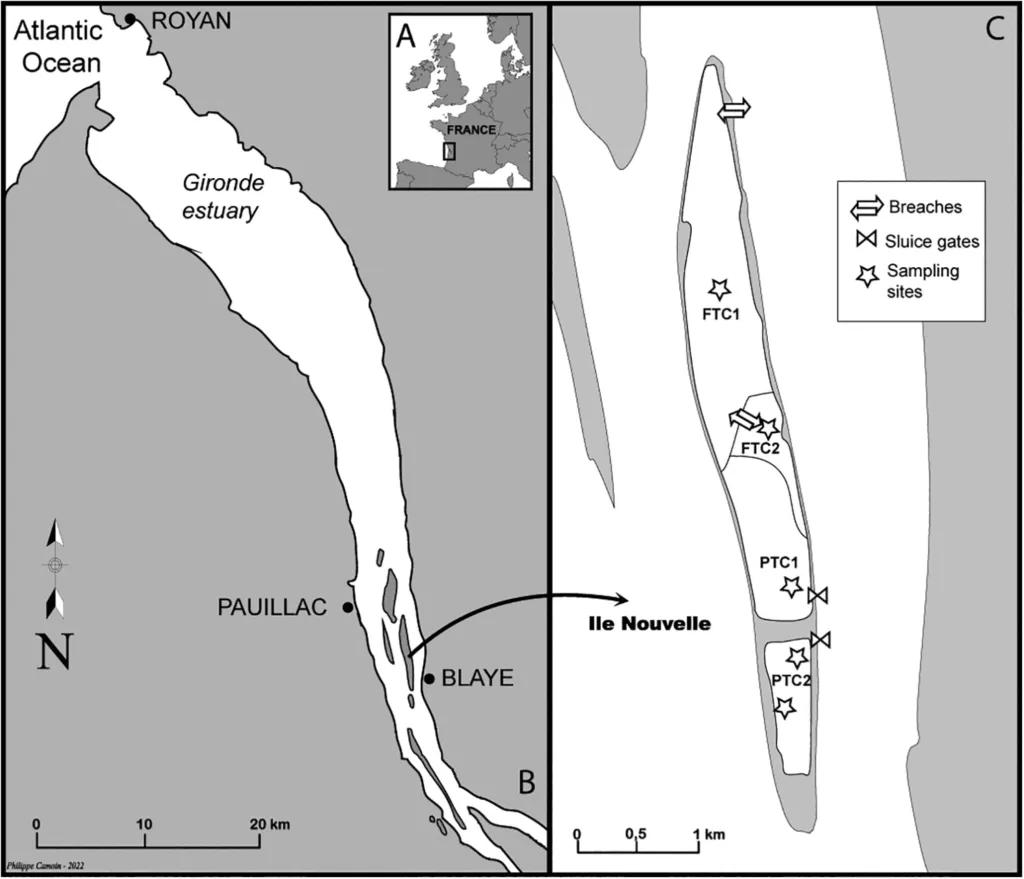Aquatic food webs in restored marshes: a stable-isotope approach in the Gironde estuary (SW France)
Intertidal marshes are important habitats for nekton. However, historical draining and dyking hampered European coastal wetlands. Marsh restoration is therefore critical not only to improve their capacity to protect coastal lines but also to rehabilitate their ecological functionalities. The benefits of intertidal marsh restoration for nekton community composition and feeding ecology are examined in a case study within the largest macrotidal estuary in Western Europe (Gironde). The structure and functioning of nekton food webs are addressed using stable isotopes of carbon (δ13C) and nitrogen (δ15N). δ13C values of suspended particulate matter illustrated the influence of the tidal connectivity with the adjacent estuary in restored habitats. δ15N values of nekton and its resources evidenced little difference in food-web complexity, but spatial or seasonal variations for some resources and consumers, related to a combination of temporal and tidal effects. The European eel (Anguilla anguilla) and the introduced freshwater topmouth gudgeon (Pseudorasbora parva) dominated food webs in the fully and partially connected marsh habitats, respectively. The isotopic niche and diet composition of A. anguilla also varied between habitats, as did the diet of other nekton species (Chelon ramada and Palaemon longirostris). This study informs the rehabilitation process of important functionalities of restored aquatic habitats for nekton.
Laure Carassou, Maud Vildier, Jeremy Lobry, Benoit Lebreton, Nicolas Savoye, Mireia Kohler, Stéphane Bons, Mario Lepage, Hugues Blanchet, Henrique Cabral
- Restoration ecology
Date de sortie 21/04/2025
